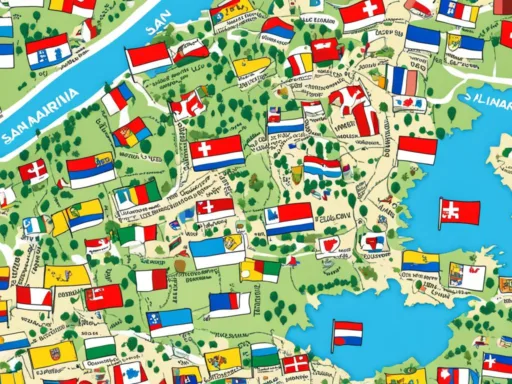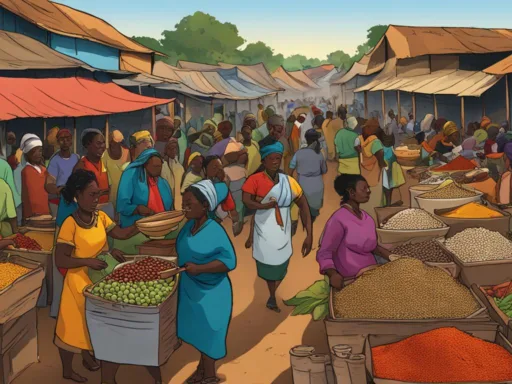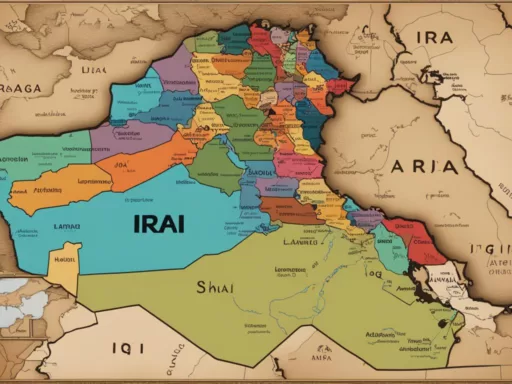Set against a backdrop of lush rainforests and rich traditions, Brunei’s linguistic landscape is as diverse and complex as its people. The small yet vibrant nation of Brunei is home to a range of languages, each contributing to the country’s cultural fabric. At the heart of the languages spoken in Brunei lies Malay, the official language, which is central to the country’s Brunei language policy, reinforcing its national identity since the constitution’s establishment in 1959. The tapestry of spoken dialects extends beyond to include both indigenous tongues threatening to fade and foreign languages brought by waves of expatriates, painting a dynamic picture of the linguistic landscape of Brunei.
Whether wandering through the bustling markets in Bandar Seri Begawan or exploring the verdant heartlands, one can hear the symphony of Standard Malay in formal settings and Brunei Malay’s colloquial charm. The interplay between Malay used in official discourse and Brunei Malay in daily conversation illustrates the distinctive diglossic environment of the country. This linguistic duality not only signifies the flexibility and adaptability of language in Brunei but also underscores a heritage worth preserving.
Key Takeaways
- Malay is the official language of Brunei, reflecting the national ethos of the country’s language policy.
- Brunei Malay, widely spoken across the nation, is a testament to the informal linguistic culture.
- The presence of minority languages and dialects adds to the language diversity in Brunei but also indicates a need for preservation efforts.
- English, Chinese dialects, and other foreign languages are integral to the linguistic mosaic of Brunei.
- The balancing act of Brunei’s language policy between global connectivity and cultural identity remains a cornerstone of its linguistics.
The Significance of Malay in Brunei’s Linguistic Landscape
In the heart of Southeast Asia, Brunei’s official language, Standard Malay Brunei, serves as a cornerstone of the nation’s identity, sanctioned by the constitution over half a century ago. As one delves into the depths of Brunei’s linguistic culture, the layers of Melayu Islam Beraja (MIB) philosophy reflect the integral role of language in the societal fabric. Beyond formalities, the vernacular Brunei Malay emerges as the familiar voice of the people, echoing in homes and marketplaces across the sultanate. The story of these languages unfolds within the frameworks of the Brunei language policy, which shapes the national narrative while echoing the concerns over the fading echoes of Brunei’s indigenous languages.

From governance to education, the national language Brunei anchors itself in the daily lives of its citizens. However, this linguistic roots run deeper as they branch into various Brunei dialects, forming a network of linguistic diversity. Moreover, as the lingua franca of Brunei, the dialect of Malay native to the region plays an influential role in the everyday interplay of language. In this next section, let’s explore the duality of Malay in both its standard form and regional dialect and the impacts on the country’s identity.
Understanding Standard Malay as the Official Language
Positioned at the helm of Bruneian communication, Standard Malay’s place as the Brunei official language underscores its ubiquitous presence in official discourse. This form of Malay parallels those standards found in neighboring Malaysia and Indonesia but carries its own distinct rhotic quality native to the Sultanate. It’s in the halls of government, in the classrooms of knowledge, and at the forefront of formal speech where Standard Malay asserts its linguistic prestige.
Brunei Malay: The Predominant Vernacular
Trickling down to the streets and homes of natives is the predominant vernacular, Brunei Malay. Shared amongst approximately 266,000 Bruneians, it stands as a testament to the intimacy and informality characteristic of local communication. Strengthening its position, the vernacular shares a high lexical affinity with both Standard Malay and Kedayan, evolving steadily to encompass and often eclipse the various Brunei dialects. As a tool of everyday expression, it encapsulates the adaptability of the Bruneian tongue, fluid in its domestic environment yet solid in its cultural significance.
Language Policy and the Impact on National Identity
The government’s strategic linguistic framework, the Brunei language policy, not only safeguards the prominence of Malay as the national tongue but also steers the collective linguistic journey of the citizenry. This policy fosters language diversity in Brunei, promoting a unified identity intertwined with the Melayu Islam Beraja ethos. Yet, the rise of Brunei Malay in prominence unfolds with a silent repercussion—the gradual obsolescence of the myriad indigenous languages Brunei cherishes. The dichotomy between unity and diversity in Brunei’s linguistic landscape continues to be a delicate balance, shaping the country’s national language Brunei and, consequently, its identity.
Languages Spoken in Brunei: A Glimpse into the Country’s Dialects
Brunei Darussalam, although diminutive in size, is a nation with a vibrant mosaic of cultures and languages. The national linguistic scenario is particularly interesting due to the interplay between indigenous languages Brunei, the prevalent Brunei dialects, and the spoken languages in Brunei that enhance the socio-cultural dynamics of the country. In the following exploration, we uncover the complexities and the beauty of Brunei’s dialectal diversity.
Reflecting a portion of the nation’s linguistic identity is Brunei Malay, not just a language but a cultural stronghold binding the Bruneian people. Amidst this linguistic richness, the survival of indigenous languages Brunei faces challenges. These dialects hold invaluable cultural narratives and a historical continuity that the advancing dominance of Brunei Malay might inadvertently silence. As these indigenous tongues teeter on the brink of obscurity, understanding and appreciating their significance is vital.

Brunei’s cultural tapestry is embellished with at least seven indigenous languages. This includes fabrics such as Tutong, spoken by the Tutong people, and Belait, the language of the Belait communities. Additionally, languages like Dusun, Bisaya, and Murut serve as vocal representations of their respective ethnic groups. Each of these languages carries its own unique features and patterns—linguistic threads weaving together the heritage of their speakers. Herein rests the essence of Brunei dialects, bearing witness to centuries-old traditions and ways of life.
- Tutong: A language with a poetic rhythm, reflective of serene riverbanks and lush greenery inhabited by the Tutong community.
- Belait: Echoing the practices and the environment of the industrious Belait people.
- Dusun: The oral footsteps of Dusun farmers who have toiled the land for generations.
- Bisaya: A sociolect rich with the wisdom and festivities of the Bisaya population.
- Murut: The warrior tongue, narrating tales of bravery and community of the Murut residents.
Yet, as the spoken languages in Brunei broaden to encompass an interconnected world, these indigenous dialects experience diminishing use. The younger demography, leaning towards Brunei Malay for daily communication and social media interaction, often graduate from youth without the fluency of their ancestral linguistic wealth. It’s essential to recognize that preserving these tongues is not merely about maintaining a means of communication but about holding onto a legacy brimming with ancestral knowledge and a sense of belonging.
Emphasizing the dire need to protect these languages, it’s crucial for national policies to introduce initiatives that encourage their learning and usage. Such measures might be as fundamental as including these languages in school curricula or as advanced as utilizing media and technology platforms for their broader dissemination and acceptance.
The pursuit of language preservation is not just about safeguarding dialects; it’s about keeping the ethnic pulse of Brunei beating strong. To lose these languages would be akin to losing crucial pieces of a puzzle that together bring to life the vibrant picture of Brunei’s cultural DNA. As custodians of this legacy, it is our prime responsibility to ensure that the whispers of history carried by indigenous languages Brunei never fade into silence.
English in Brunei: A Language of Business and Education
As the sun rises over the sultanate of Brunei, the ubiquitous presence of English becomes apparent, not only in the realm of commerce but also within the bastions of education. This global lingua franca plays an instrumental role in shaping the country’s modern dynamics, establishing itself as an indispensable channel for international discourse and educational development.

With its roots embedded in the country’s cultural tapestry, English spoken in Brunei commands its stance as a principal language of progress. In classrooms, courtrooms, and corporate offices, the English language unfurls as a bridge connecting Brunei to the wider world.
Bilingual Education System and the Role of English
The transformational bilingual education system in Brunei, a robust framework introduced in 1985, poises English alongside Malay. Initially, laying a foundational bedrock with Malay, the system gently guides students into the world of English from their fourth year of primary school. This educational approach not only fosters bilingual proficiency but also grooms future citizens to thrive in an increasingly connected world. The SPN21 education system reinforces this trajectory, ingraining English in the Brunei bilingual education system right from the early stages of learning, particularly emphasizing math and sciences.
English in Legal Proceedings and Media
The importance of English escalates within the hallowed halls of justice, where it is predominantly the language of the courts in Brunei. Legal professionals adeptly maneuver between Malay and English, a practice known as code-switching, to ensure clarity and precision in legal matters. This bilingual proficiency underscores the legal system’s intricacies, mirroring the nation’s broader commitment to maintaining a dual linguistic heritage. The English language media in Brunei, manifested in publications such as the “Borneo Bulletin,” provides daily windows into global discussions, fostering an informed and engaged populace.
| Aspect of Usage | Role of English in Brunei |
|---|---|
| Business Communication | Primary language for international trade and corporate interactions |
| Educational System | Medium of instruction for key subjects, underpinning the bilingual education system Brunei |
| Legal Domain | Preferred language for documentation and deliberation in courts |
| Media | Language of the prominent English newspaper, enhancing Brunei English media presence |
Amidst the emergence of American English’s influence, a distinct Brunei English emerges, mirroring the unique blend of linguistic nuances that characterize this sovereign state. As English continues to forge its path through the educational and business landscapes of Brunei, it contributes significantly to the shaping of a nation adept at balancing global interconnectivity with its rich cultural legacy.
Preserving the Diversity: Indigenous and Minority Languages of Brunei
Within the sultanate’s borders, the indigenous languages of Brunei contribute to a tapestry of cultural depth and historical richness. Yet, the tapestry is fraying, with each thread—each language—facing the severe threat of disappearing. These languages, storied and expressive, stand not just as methods of communication but as fundamental elements of Brunei’s cultural heritage languages. As the dominance of Brunei Malay spreads, what can be done to uphold and nurture these vital cultural signifiers?

The State of Indigenous Languages: Threats to Linguistic Heritage
The indigenous languages of Brunei, such as Tutong, Belait, Dusun, Bisaya, and Murut, while invaluable, encounter threats to linguistic heritage that jeopardize their very survival. With the growing prevalence of Brunei Malay, younger generations are increasingly alienated from the linguistic traditions of their ancestors, rendering these dialects all but historic footnotes.
- Tutong – A language echoing the riverbanks and dense greenery of its namesake community faces dwindling daily use.
- Belait – An embodiment of the longstanding industrious spirit of the Belait people, yet increasingly unheard among the youth.
- Dusun and Bisaya – As the heartbeat languages of their respective tribes, they are seldom heard beyond ceremonial purposes in modern times.
- Murut – Known for its legacy of valor and community but now spoken primarily by older members of Murut society.
Each language is a vital cultural thread in the fabric of Brunei’s history and identity, and their erosion signifies the loss of diversity and the undermining of a plurally cultural Brunei.
Efforts to Revitalize Endangered Languages: A Cultural Imperative
Understanding the critical role these languages play in the nation’s cultural identity has led to growing efforts focused on revitalizing endangered languages in Brunei. Language preservationists work tirelessly to weave these ancient linguistic threads back into the nation’s cultural quilt, inspiring initiatives aimed at the resurgence and celebration of these endangered dialects.
| Indigenous Language | Preservation Initiatives |
|---|---|
| Tutong | Community-led education programs and cultural festivals. |
| Belait | Compilation and publication of oral histories. |
| Dusun | Recognition through media representation and storytelling events. |
| Bisaya | Local language courses and integration in curricula. |
| Murut | Collaborative efforts with neighboring regions for language conservation. |
By placing an emphasis on preserving language diversity in Brunei, initiatives such as these not only safeguard the speech forms but also protect the worldview, traditions, and knowledge that they embody. In cultivating sustainable practices for language revitalization, Brunei acknowledges its role as a guardian of a diverse, cultural conversation—one resonating through time and across generations.
Conclusion
The linguistic landscape of Brunei is a remarkable reflection of the nation’s identity, rich in diversity and cultural nuance. With Standard Malay standing proudly as the official language and English serving as a key conduit for business, education, and legal proceedings, Brunei presents itself as a nation deeply rooted in tradition yet forward-thinking in its global outlook. However, the narrative of Brunei’s language story extends beyond the official and the global; it is equally about the local and the personal. The heart of this tale lies in the vernacular – in Brunei Malay – and the minority languages that are integral to the country’s cultural mosaic.
Preserving language diversity in Brunei is not simply a cultural consideration but a societal imperative. It is about maintaining the vibrant tapestry that tells the story of the nation’s past and informs its present. As Brunei navigates through the complexities of modernity and connectivity, ensuring the continuity and resurgence of its indigenous and minority languages becomes as much a strategic policy endeavor as it is a community-driven passion. The essence of any language is in its use, and in the embrace of these linguistic treasures by future generations.
To safeguard the rich linguistic landscape of Brunei, concerted efforts must continue to unfold – through educational reforms, media representation, and public engagement. Such multifaceted approaches pave the way for a future in which languages do not merely survive but flourish; where the linguistic heritage that emblemizes Brunei’s identity is not lost but celebrated. As custodians of this rich heritage, the responsibility lies with all stakeholders to ensure that the melody of Brunei’s languages remains vibrant and resonant for years to come, thus preserving language diversity for the tapestry that it weaves within the nation’s cultural realm.
FAQ
What are the primary languages spoken in Brunei?
The primary language spoken in Brunei is Malay, with the official form being Standard Malay. The Brunei Malay dialect is the most widely spoken vernacular in the country. Other languages include English and various Chinese dialects, such as Hokkien, Hakka, Mandarin, and Cantonese. There are also several indigenous languages spoken in Brunei, including Tutong, Kedayan, Belait, Murut, Dusun, and Brunei Bisaya.
What is the official language of Brunei?
The official language of Brunei is Standard Malay. This was established with the constitution in 1959 and plays a crucial role in the nation’s formal affairs, such as in governmental procedures and education. It reinforces the MIB philosophy (Melayu Islam Beraja) of Brunei’s national identity.
How does the Brunei Malay dialect differ from Standard Malay?
The Brunei Malay dialect is the predominant vernacular language used in informal settings by the Bruneian populace. It is characterized by high lexical similarity with Standard Malay and exhibits some influences from the Kedayan language. It differs from Standard Malay, which is more formal and rhotic, with pronunciations that are influenced by local dialects.
How does Brunei’s language policy impact its national identity?
Brunei’s language policy, which emphasizes the use of Standard Malay and Brunei Malay, shapes the national identity by fostering a unified linguistic environment. This policy supports the nation’s Melayu Islam Beraja philosophy. However, this focus on Malay languages has led to the diminishing presence and use of indigenous minority languages within the country.
What indigenous languages are spoken in Brunei?
The indigenous languages of Brunei include Tutong, Belait, Dusun, Bisaya, Murut, and Kedayan, among others. These languages are spoken by different ethnic minority groups and are part of the nation’s cultural heritage.
What role does English play in Brunei?
English plays a significant role in Brunei as a language of business, education, and the courts. It is widely used in code-switching with Malay and is the medium of instruction for mathematics and science subjects under the bilingual education system. English is also the language of the daily English newspaper, the “Borneo Bulletin.”
Are indigenous languages in Brunei at risk?
Yes, many of the indigenous languages in Brunei face threats of extinction. The widespread use of Brunei Malay is contributing to the decline in the use of these indigenous languages among younger generations. Efforts are being undertaken by language preservationists to raise awareness and promote measures to revitalize and maintain these languages.
What efforts are being made to revitalize endangered languages in Brunei?
Various efforts to revitalize endangered languages in Brunei include documentation, the promotion of language learning programs, ad the inclusion of these languages in cultural events. Advocates are working to raise awareness of the importance of preserving these languages for the nation’s cultural diversity and heritage.






